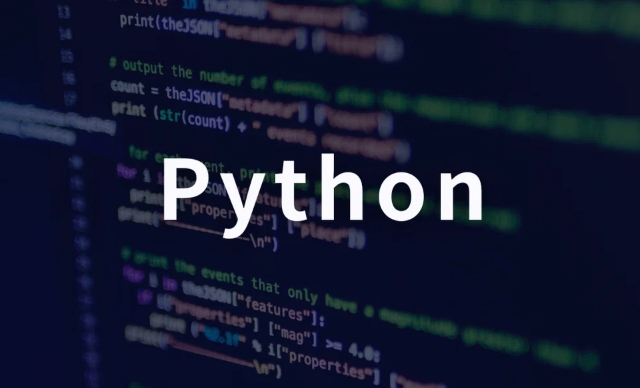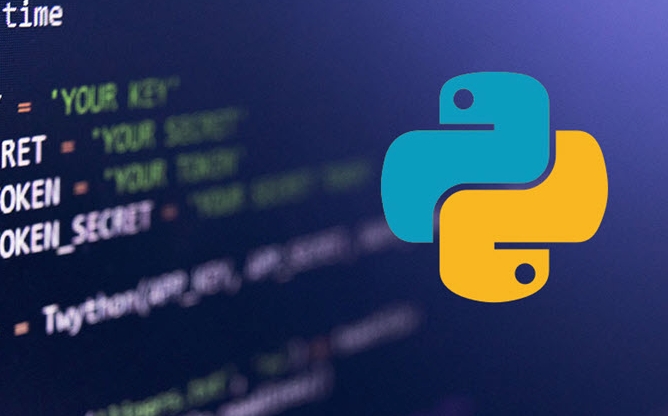Use subprocess.Popen with communicate() to interact with external processes safely. 1. Basic usage: start the process through subprocess.Popen(['ls', '-l']), communicate() to get stdout and stderr, and return code is obtained through returncode. 2. Enter data: Set stdin=PIPE, call communicate(input="data") to pass content to the process, such as grep filtering text. 3. Timeout control: communicate(timeout=3) prevents jamming. After the timeout, call kill() to terminate the process and communicate() again to clean the output. 4. Error handling: Check whether the returncode is 0, non-zero means failure, and stderr contains error information. 5. Shell mode: shell=True supports shell functions such as pipelines, but there are security risks, so you should avoid splicing user input. 6. Communicate() instead of read() is recommended because it uses threads to avoid deadlocks caused by full stdout/stderr buffer. Always use communicate(), set text=True, use timeout reasonably, check the return code, and use shell=True with caution are key practices to safely call external commands.

When you need to interact with external processes in Python, subprocess.Popen is a very powerful and flexible tool. With communicate() method, the output can be read safely, and the input can be passed in safely, and potential deadlock problems can be avoided.

Below is a clear example of subprocess.Popen communicate() usage, covering common scenarios.
? Basic usage: Run commands and get output
import subprocess
# Start a process and run 'ls -l' (Linux/macOS) or 'dir' (Windows)
process = subprocess.Popen(['ls', '-l'], stdout=subprocess.PIPE, stderr=subprocess.PIPE, text=True)
# Use communicate() to wait for the end and get stdout and stderr
stdout, stderr = process.communicate()
print("Return code:", process.returncode)
print("standard output:\n", stdout)
print("Error output:\n", stderr)??
text=Truemeans that input and output are processed in string form (Python 3.7), otherwise it is bytes.
? Enter data into the process (such as interactive commands)
For example, use grep to filter the text passed from standard input:
import subprocess
# Run grep to match the line containing 'hello' process = subprocess.Popen(['grep', 'hello'], stdin=subprocess.PIPE, stdout=subprocess.PIPE, stderr=subprocess.PIPE, text=True)
# Send input via communicate and read the output stdout, stderr = process.communicate(input="hello world\nthis is a test\nsay hello again\n")
print("Return code:", process.returncode)
print("Matching line:\n", stdout)Output:

Return code: 0 Matching lines: hello world Say hello again
? Process long-running commands (timeout control)
communicate() supports setting timeout to avoid program stuck:
import subprocess
process = subprocess.Popen(['sleep', '10'], stdout=subprocess.PIPE, stderr=subprocess.PIPE, text=True)
try:
stdout, stderr = process.communicate(timeout=3) # Wait for up to 3 seconds except subprocess.TimeoutExpired:
process.kill() # terminate the process after timeout, stdout, stderr = process.communicate() # Call again to get the remaining output (usually empty)
print("Timeout, process terminated")?Catch errors and check return status
import subprocess
process = subprocess.Popen(['python', 'noneexistent_script.py'],
stdout=subprocess.PIPE,
stderr=subprocess.PIPE,
text=True)
stdout, stderr = process.communicate()
if process.returncode != 0:
print("Command execution failed!")
print("Error message:", stderr)
else:
print("Output:", stdout)? Use shell mode (use with caution)
Sometimes you want to use shell features (such as pipelines, redirects):
import subprocess
process = subprocess.Popen('echo "hello" | tr "az" "AZ"',
shell=True,
stdout=subprocess.PIPE,
stderr=subprocess.PIPE,
text=True)
stdout, stderr = process.communicate()
print("Result:", stdout.strip()) # Output: HELLO?? Note:
shell=Truehas security risks (especially splicing user input), so try to avoid it.
? Why is communicate() recommended instead of .stdout.read() ?
Using process.stdout.read() directly may cause deadlocks because:
- The child process outputs too much and the buffer is full, so it cannot continue to output.
- The parent process is waiting for output, but the child process is stuck, forming a deadlock.
communicate() uses independent threads to read stdout and stderr respectively, avoiding this problem.
? Summary: Key Points
- ? Always use
communicate()to interact with child processes (unless you know what you are doing). - ? Set
text=Trueto make it easier to process strings. - ? Use
timeoutto prevent infinite waiting. - ? Check
process.returncodeto determine whether it is successful. - ? Avoid
shell=Trueunless necessary.
Basically these common scenarios. Popen communicate() is one of the safest and most controllable ways for Python to call external commands.
The above is the detailed content of python subprocess popen communicate example. For more information, please follow other related articles on the PHP Chinese website!

Hot AI Tools

Undress AI Tool
Undress images for free

Undresser.AI Undress
AI-powered app for creating realistic nude photos

AI Clothes Remover
Online AI tool for removing clothes from photos.

Clothoff.io
AI clothes remover

Video Face Swap
Swap faces in any video effortlessly with our completely free AI face swap tool!

Hot Article

Hot Tools

Notepad++7.3.1
Easy-to-use and free code editor

SublimeText3 Chinese version
Chinese version, very easy to use

Zend Studio 13.0.1
Powerful PHP integrated development environment

Dreamweaver CS6
Visual web development tools

SublimeText3 Mac version
God-level code editing software (SublimeText3)

Hot Topics
 Polymorphism in python classes
Jul 05, 2025 am 02:58 AM
Polymorphism in python classes
Jul 05, 2025 am 02:58 AM
Polymorphism is a core concept in Python object-oriented programming, referring to "one interface, multiple implementations", allowing for unified processing of different types of objects. 1. Polymorphism is implemented through method rewriting. Subclasses can redefine parent class methods. For example, the spoke() method of Animal class has different implementations in Dog and Cat subclasses. 2. The practical uses of polymorphism include simplifying the code structure and enhancing scalability, such as calling the draw() method uniformly in the graphical drawing program, or handling the common behavior of different characters in game development. 3. Python implementation polymorphism needs to satisfy: the parent class defines a method, and the child class overrides the method, but does not require inheritance of the same parent class. As long as the object implements the same method, this is called the "duck type". 4. Things to note include the maintenance
 Python Function Arguments and Parameters
Jul 04, 2025 am 03:26 AM
Python Function Arguments and Parameters
Jul 04, 2025 am 03:26 AM
Parameters are placeholders when defining a function, while arguments are specific values ??passed in when calling. 1. Position parameters need to be passed in order, and incorrect order will lead to errors in the result; 2. Keyword parameters are specified by parameter names, which can change the order and improve readability; 3. Default parameter values ??are assigned when defined to avoid duplicate code, but variable objects should be avoided as default values; 4. args and *kwargs can handle uncertain number of parameters and are suitable for general interfaces or decorators, but should be used with caution to maintain readability.
 Explain Python generators and iterators.
Jul 05, 2025 am 02:55 AM
Explain Python generators and iterators.
Jul 05, 2025 am 02:55 AM
Iterators are objects that implement __iter__() and __next__() methods. The generator is a simplified version of iterators, which automatically implement these methods through the yield keyword. 1. The iterator returns an element every time he calls next() and throws a StopIteration exception when there are no more elements. 2. The generator uses function definition to generate data on demand, saving memory and supporting infinite sequences. 3. Use iterators when processing existing sets, use a generator when dynamically generating big data or lazy evaluation, such as loading line by line when reading large files. Note: Iterable objects such as lists are not iterators. They need to be recreated after the iterator reaches its end, and the generator can only traverse it once.
 Python `@classmethod` decorator explained
Jul 04, 2025 am 03:26 AM
Python `@classmethod` decorator explained
Jul 04, 2025 am 03:26 AM
A class method is a method defined in Python through the @classmethod decorator. Its first parameter is the class itself (cls), which is used to access or modify the class state. It can be called through a class or instance, which affects the entire class rather than a specific instance; for example, in the Person class, the show_count() method counts the number of objects created; when defining a class method, you need to use the @classmethod decorator and name the first parameter cls, such as the change_var(new_value) method to modify class variables; the class method is different from the instance method (self parameter) and static method (no automatic parameters), and is suitable for factory methods, alternative constructors, and management of class variables. Common uses include:
 How to handle API authentication in Python
Jul 13, 2025 am 02:22 AM
How to handle API authentication in Python
Jul 13, 2025 am 02:22 AM
The key to dealing with API authentication is to understand and use the authentication method correctly. 1. APIKey is the simplest authentication method, usually placed in the request header or URL parameters; 2. BasicAuth uses username and password for Base64 encoding transmission, which is suitable for internal systems; 3. OAuth2 needs to obtain the token first through client_id and client_secret, and then bring the BearerToken in the request header; 4. In order to deal with the token expiration, the token management class can be encapsulated and automatically refreshed the token; in short, selecting the appropriate method according to the document and safely storing the key information is the key.
 What are Python magic methods or dunder methods?
Jul 04, 2025 am 03:20 AM
What are Python magic methods or dunder methods?
Jul 04, 2025 am 03:20 AM
Python's magicmethods (or dunder methods) are special methods used to define the behavior of objects, which start and end with a double underscore. 1. They enable objects to respond to built-in operations, such as addition, comparison, string representation, etc.; 2. Common use cases include object initialization and representation (__init__, __repr__, __str__), arithmetic operations (__add__, __sub__, __mul__) and comparison operations (__eq__, ___lt__); 3. When using it, make sure that their behavior meets expectations. For example, __repr__ should return expressions of refactorable objects, and arithmetic methods should return new instances; 4. Overuse or confusing things should be avoided.
 How does Python memory management work?
Jul 04, 2025 am 03:26 AM
How does Python memory management work?
Jul 04, 2025 am 03:26 AM
Pythonmanagesmemoryautomaticallyusingreferencecountingandagarbagecollector.Referencecountingtrackshowmanyvariablesrefertoanobject,andwhenthecountreacheszero,thememoryisfreed.However,itcannothandlecircularreferences,wheretwoobjectsrefertoeachotherbuta
 Describe Python garbage collection in Python.
Jul 03, 2025 am 02:07 AM
Describe Python garbage collection in Python.
Jul 03, 2025 am 02:07 AM
Python's garbage collection mechanism automatically manages memory through reference counting and periodic garbage collection. Its core method is reference counting, which immediately releases memory when the number of references of an object is zero; but it cannot handle circular references, so a garbage collection module (gc) is introduced to detect and clean the loop. Garbage collection is usually triggered when the reference count decreases during program operation, the allocation and release difference exceeds the threshold, or when gc.collect() is called manually. Users can turn off automatic recycling through gc.disable(), manually execute gc.collect(), and adjust thresholds to achieve control through gc.set_threshold(). Not all objects participate in loop recycling. If objects that do not contain references are processed by reference counting, it is built-in







